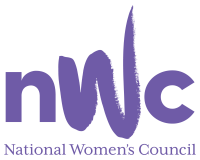The Female Face of Homelessness
Published: Friday, April 06, 2018
Alarming rise in the number of homeless women and children must be addressed
On the eve of the National Day of Action against Homelessness and the Housing Crisis, the National Women’s Council of Ireland (NWCI) is launching a paper documenting the impact of homelessness on women’s health. The paper outlines key recommendations both to address the housing crisis and to support women who are currently homeless. NWCI is calling on Government to increase social housing stock, develop a homeless healthcare strategy and establish support services for women living in homelessness.
Dr Cliona Loughnane, Women’s Health Coordinator at the National Women’s Council of Ireland said,
“Homelessness, affecting almost 10,000 people in Ireland, has reached epidemic proportions. The housing crisis is clearly a woman’s issue, with our rate of female homelessness now double that of other European countries. The traditional image of homelessness in Ireland has been of single men rough sleeping. However, today’s reality of homelessness is very different, and not enough of a focus is given to the female face of homelessness. Women make up 42% of the adult homeless population nationwide, while one in three of those without a home is a child. The shocking rates of female and child homelessness are a result of the dramatic increase in families who have been forced from their homes due to rising rents, the majority of whom are women-headed lone parent families.”
Dr Cliona Loughnane continued,
“Ahead of the National Day of Action, NWCI is seeking to draw attention to the female face of homelessness in Ireland. The number of women becoming homeless continues to increase and women and their families are spending protracted periods in emergency and other unsuitable accommodation.
“We must acknowledge the feminisation of homelessness which has happened in Ireland and respond to the distinct housing and support needs of women who are at risk of, or experiencing homelessness. Women often enter homelessness with a history of domestic violence and trauma. They may have spent time in hospital, prison or other institutional settings. Homeless women can be separated from their children or wider family and experience significant feelings of stigma and shame.
“Women are also more likely than men to spend periods in ‘hidden’ homeless situations, staying with friends and family rather than being accommodated by housing authorities or other service providers. When women eventually present to homeless services they are often at crisis point with a range of complex needs, often coinciding with deteriorating physical and mental health.”
/ENDS
For more information please contact Sarah Clarkin, Communications Officer, 085 8619087.
Notes to Editor
- NWCI’s paper ‘The Impact of Homelessness on Women’s Health’ is available here.
- The National Day of Action on Saturday 7th April has been organised by the National Homeless and Housing Coalition.
- Most recent homeless figures come from the Department of Housing, Planning and Local Government (Feb 2018) Homelessness Report. 9,807 people are experiencing homelessness (3,755 of which are children). There are 2,570 homeless women, making up 42% of the 6,052 homeless adult population. There are 1,739 homeless families, 60% of which are lone parent-headed households.
- Approximately 42% of the homeless population in Ireland are women, and this increases to 44% in Dublin. In Europe, the figures are much lower, typically 20-33%. See Mayock, P & Bretherton, J (2017) Women’s Homelessness in Europe. Palgrave: MacMillan.
